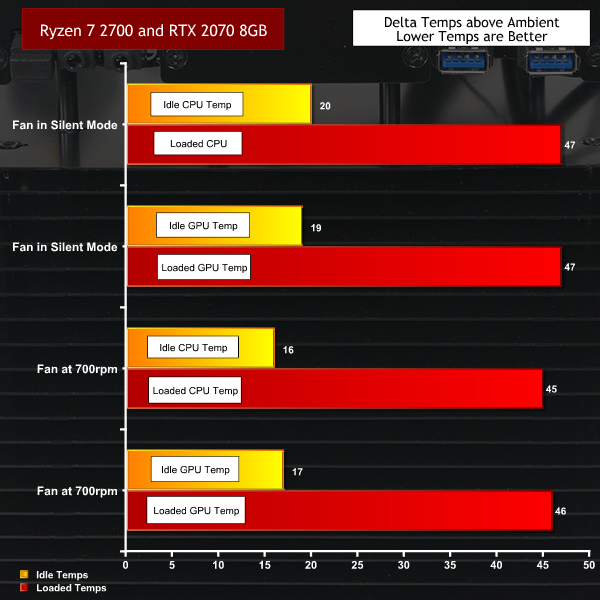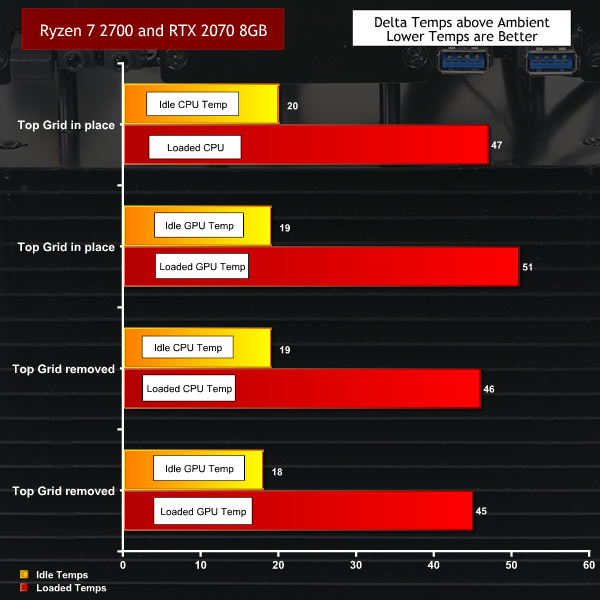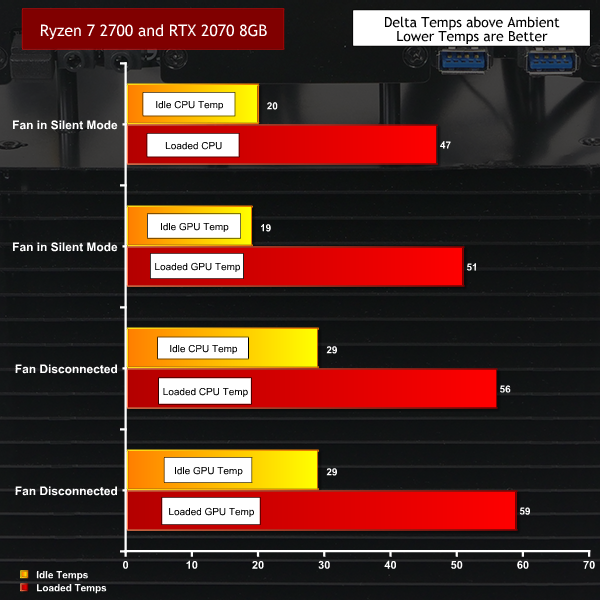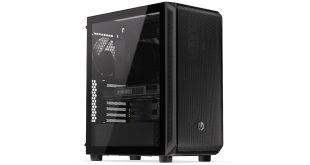Cooling Performance
As you will have seen in our video we tested three distinct configurations of the cooling system.
First we increased the fan speed from 300rpm (very low and slow) to a fixed 700rpm, which was still effectively silent.
After that we ran the fan at low speed and removed the top grid cover on the chassis to assist air flow.
Finally we disconnected the fan header to mimic passive operation. This is not entirely accurate as the fan was still installed, however it gave us a good idea of how the chassis behaves in this configuration.
Cooling Performance Overview
Idle system power draw is 43W at the mains plug. In an application such as Blender the CPU draws 75W and the whole system pulls 117W. Under load the RTX 2070 graphics draw 185W, and in a mixed test such as 3D Mark the system power draw is 250W.
These are significant numbers yet the cooling system in The First does a good job. Air flow is clearly important in this chassis, however it is less critical than you might expect. We found that running a fan at a very low speed is useful, but increasing the speeds makes very little difference. Removing the top grid also helps air flow, just as you would expect, but again it is more of a detail than a requirement. Disconnecting the fan altogether makes the system run about ten degrees hotter, and we would be perfectly happy playing games with the system in passive mode.
Acoustics Performance Overview.
When we received The First we initially thought it was passively cooled as it was effectively silent. We quickly realised the version we had been sent used a 140mm Noctua fan that was very quiet indeed. In any practical sense the PC gave no audible indication that it was running and to our ears that means ‘effectively silent’ – but not quite actually silent.
Disconnecting the fan (or removing it entirely) means the system is completely silent and in the case of our test PC we suffered no coil whine or other nasty noises so it was truly silent.
 KitGuru KitGuru.net – Tech News | Hardware News | Hardware Reviews | IOS | Mobile | Gaming | Graphics Cards
KitGuru KitGuru.net – Tech News | Hardware News | Hardware Reviews | IOS | Mobile | Gaming | Graphics Cards





